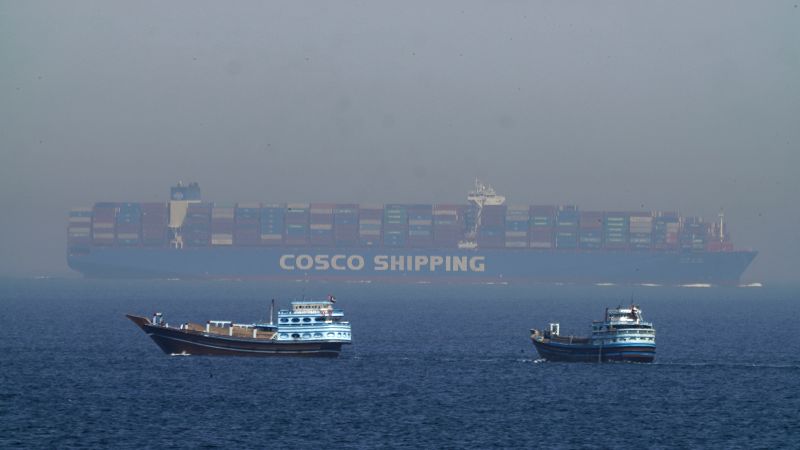What Happened
On June 22, 2025, the United States conducted airstrikes on three Iranian nuclear facilities, escalating tensions in the Middle East and prompting immediate reactions in global markets, particularly in oil prices. Following the strikes, West Texas Intermediate (WTI) crude oil prices increased by approximately 1%, reaching around $76 per barrel. This rise reflects concerns among traders regarding potential disruptions to oil shipments through the Strait of Hormuz, a critical passage for global oil supplies, where about 20% of the world’s oil flows.
Despite the initial spike in oil prices, subsequent trading sessions saw a moderation in these gains, indicating a complex market response. Analysts noted that while geopolitical risks were heightened, the oil market appeared better equipped to handle such shocks due to existing spare capacity among exporters. This has led to varied expectations about the longevity and impact of the price increases.
Key Details
- Oil Price Movement: Following the U.S. strikes, WTI crude oil prices rose to approximately $76 per barrel, with forecasts suggesting a potential increase to $80 if tensions escalate further.
- Market Reactions: Stock markets in Asia and Europe experienced declines, with the Nikkei index dipping by 1.5% and the Euro Stoxx 50 down by 0.3%. In contrast, futures for the S&P 500 indicated slight gains.
- Geopolitical Context: The Strait of Hormuz is a vital transit point for oil, with around 20 million barrels passing through daily. Any disruption here could significantly impact economies reliant on Middle Eastern oil, particularly in Asia.
- Expert Opinions: Analysts expressed mixed views on the situation. Some, like Takahide Kiuchi from Nomura Research Institute, warned of potential economic repercussions for countries like Japan, while others, such as Daniel Hynes from ANZ Research, suggested that the market could quickly stabilize as geopolitical tensions ease.
Multiple Perspectives
The response to the U.S. strikes has been varied among analysts and market participants. On one hand, some experts, like Takahide Kiuchi, emphasize the risks posed to economies heavily dependent on Middle Eastern oil, suggesting that a prolonged conflict could lead to significant economic challenges. Kiuchi indicated that the Japanese economy could face risks that surpass those posed by previous trade tariffs.
Conversely, other analysts, including Daniel Hynes, argue that the oil market has become more resilient to geopolitical shocks due to improved supply management and spare capacity among oil exporters. Hynes noted that while geopolitical events can impact oil prices, the market has historically shown a tendency to recover quickly once tensions subside.
Furthermore, Adam Crisafulli from Vital Knowledge highlighted that despite the elevated geopolitical risks, investors do not appear overly concerned about a catastrophic disruption in oil supplies. He pointed to the relative isolation of Iran and the degradation of its military capabilities as factors that might mitigate the potential fallout from the conflict.
Context & Background
The U.S. strikes on Iranian nuclear facilities are part of a broader conflict involving Israel and Iran, which has been ongoing for several years. The Strait of Hormuz has long been a focal point in discussions about global oil security, as it serves as a key route for oil transportation. In 2022, approximately 20 million barrels of oil were shipped through this strait daily, underscoring its importance to global energy markets.
Historically, military actions in the region have led to spikes in oil prices due to fears of supply disruptions. However, recent trends suggest that the oil market may be adapting to such geopolitical tensions, with traders exhibiting a degree of caution rather than panic.
The current situation is further complicated by the broader economic context, including ongoing trade tensions and the potential for further military escalation in the Middle East. Analysts are closely monitoring the situation, particularly the responses from Iran and the implications for global oil supply.
What We Don’t Know Yet
As the situation continues to evolve, several uncertainties remain. The immediate reactions from Iran to the U.S. strikes are still unclear, particularly regarding whether Iran will take retaliatory actions that could disrupt oil shipments through the Strait of Hormuz. Additionally, the potential for further military escalation in the region raises questions about the stability of oil prices in the coming weeks.
Market participants are also watching for any changes in U.S. foreign policy or military strategy that could influence the conflict’s trajectory. The resilience of the oil market in the face of geopolitical risks will be tested as new developments unfold, and analysts will need to reassess their forecasts based on evolving conditions.
Overall, while the initial market reactions indicate heightened concern, the long-term implications will depend on both geopolitical developments and the oil market’s capacity to adapt to shocks.





